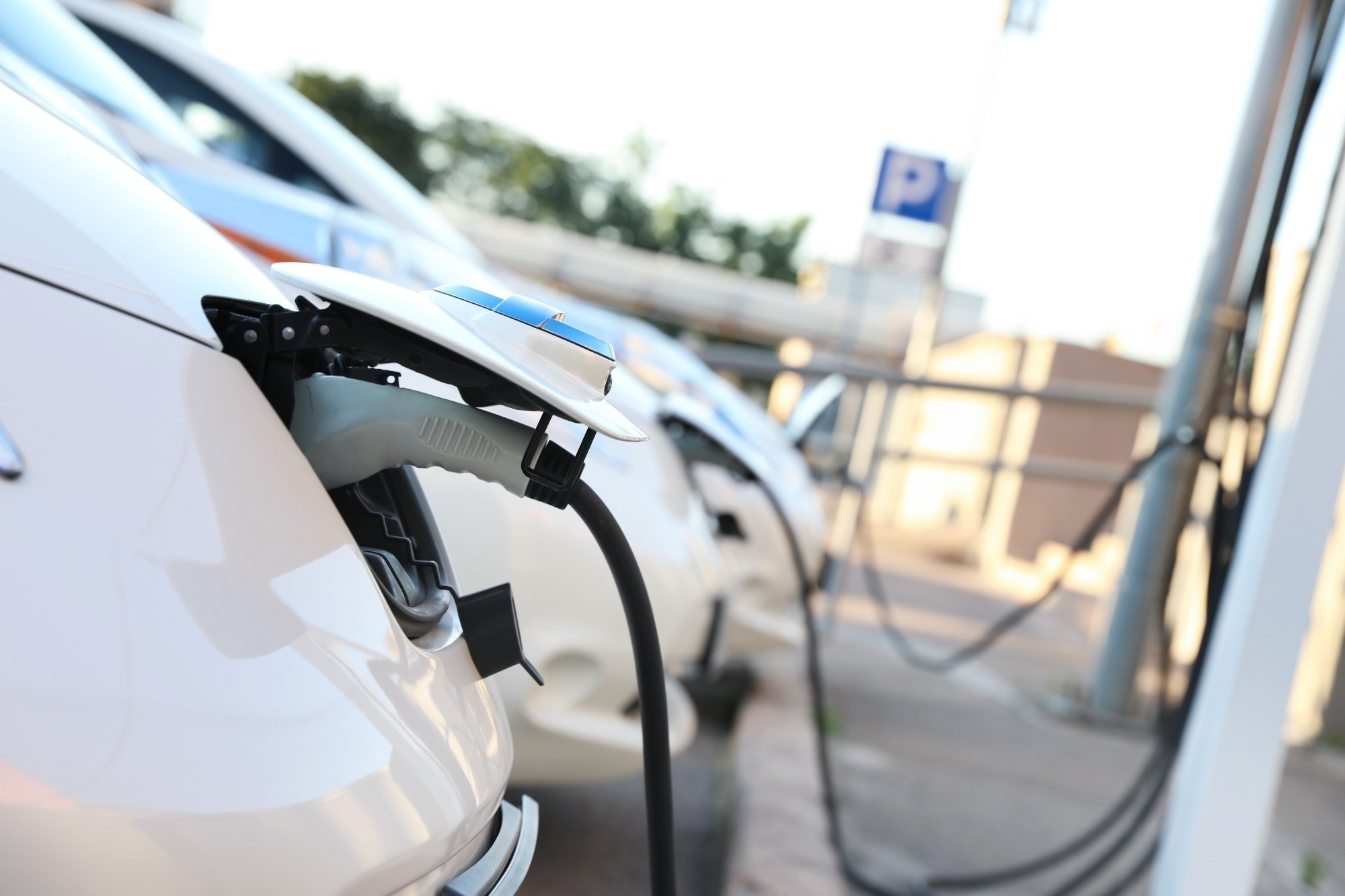In recent years, the increasing presence of electric vehicles (EVs) on roads worldwide has coincided with the rapid expansion of the emerging EV market, which is projected to continue growing in the coming decade.

Image Credit: New Africa/Shutterstock.com
The rise in popularity of EVs is driven, in part, by climate change mitigation goals to electrify the transportation sector and produce fewer greenhouse gases to lower the sector’s carbon footprint.
However, to successfully and realistically minimize the potential environmental impact of new technology while keeping electric vehicles on the road, it is crucial to have a well-thought-out strategy focusing on decarbonizing electricity production.
MIT researchers have been investigating ways to enhance EV charging and manage the increased electricity demand required to power the growing number of EVs.
The paper, published in the journal Cell Reports Physical Science, partly responds to projections showing an overnight peak in electricity usage among EV users as vehicles are charged in the evening.
This growing peak may require an electrical grid expansion to cope with the surge in demand for power in the evenings, whilst the overproduction of energy generated from solar farms throughout daylight hours can result in valuable electricity-generation capacities being left to waste.
Improving Electrified Transportation Networks: Workplace Charging
As market demand increases, so does the strain on the electrical grid, which means changes in the charging patterns of an electrified transportation system may be required to prevent exceeding generation and distribution limits which can cause electricity shortages, blowouts, and increased energy costs.
One of the proposed strategies to improve an electrified transportation network in a large city would be to roll out new charging stations for EVs carefully and strategically with delays in charging bursts to reduce any sudden peaks or burden on the grid.
During the study, the researchers gathered data from New York City and Dallas which gave the team a picture of charging habits and how long vehicles tend to be parked in various places i.e., at home, work, or other habitual activities such as routine shopping trips.
[This data] round[s] out the picture on the question of where to strategically locate chargers to support EV adoption and also support the power grid.
Professor Jessika Trancik, Institute for Data, Systems, and Society, MIT
One strategy to prevent the waste of power generated during peak daylight hours at solar power farms is to install more energy-efficient charging stations at workplaces. Currently, excess power is often wasted as there are limited resources available for storing and utilizing this energy at a later time.
Slow workplace charging can be more preferable than faster charging technologies for enabling a higher utilization of midday solar resources.
Wei Wei, Postdoctoral Researcher, MIT
This one example shows how workplace chargers offer a two-fold benefit by reducing the evening peak load from EV charging at home while ensuring that electricity generated by solar power does not go to waste.
Delayed Home Charging
The research team has proposed an additional strategy that involves tracking charging habits using a smart EV charger connected to an app. This approach would delay home charging until the energy is actually needed, ensuring that power is only released when required.
By tracking the variability in individual driving behaviors across a city’s population, this approach decentralizes the energy demand and eliminates the need for a central facility to control distribution on the grid. This could result in a significant shift in demand, ultimately increasing EV penetration in the market.
It’s basically incentivizing people to begin charging later. This can be something that is preprogrammed into your chargers. You incentivize people to delay the onset of charging by a bit, so that not everyone is charging at the same time, and that smooths out the peak.
Professor Jessika Trancik, Institute for Data, Systems, and Society, MIT
The research team emphasizes the importance of a well-planned and strategic approach to the placement of EV charging stations rather than allowing them to pop up randomly. This approach and incentives, such as delayed home charging systems, require a joint commitment from policymakers and EV users.
However, implementing strategic mitigation has the potential to minimize the environmental impact of electric vehicles in today’s world.
References and Further Reading
Chandler, D.L. (2023) Minimizing Electric Vehicles' impact on the grid, MIT News | Massachusetts Institute of Technology. Available at: https://news.mit.edu/2023/minimizing-electric-vehicles-impact-grid-0315
Needell, Z., Wei, W. and Trancik, J.E. (2023) “Strategies for beneficial electric vehicle charging to reduce peak electricity demand and store solar energy,” Cell Reports Physical Science, 4(3), p. 101287. Available at: https://doi.org/10.1016/j.xcrp.2023.101287.
Disclaimer: The views expressed here are those of the author expressed in their private capacity and do not necessarily represent the views of AZoM.com Limited T/A AZoNetwork the owner and operator of this website. This disclaimer forms part of the Terms and conditions of use of this website.